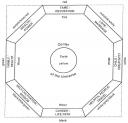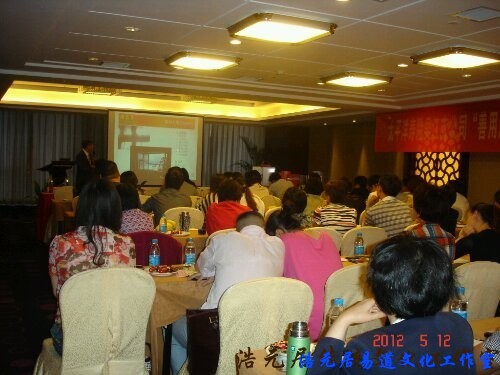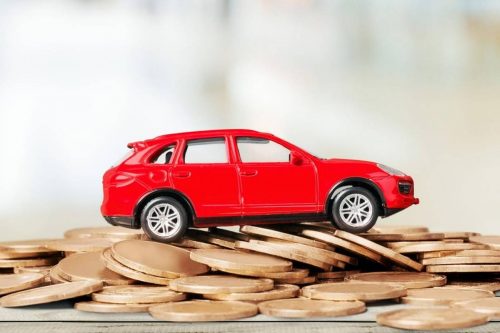来自西洋的八卦自测术
看看外国人怎么诠释八卦在风水中的使用。希望这个文章没有侵犯智权。
The Bagua is an eight-sided diagram used for the first diagnosis tool in Feng Shui to identify different areas in the home and office. The Bagua has the outline of an American stop sign. Each side of the Bagua has a value which it represents:
Career/Life Path: 9-5 job; parenthood; the ease or difficulty of your Life Path
Self-Knowledge/Wisdom: self-esteem, self-worth, self-image; issues of addiction, grief, boundaries; self-spirituality—like yoga or meditation
Family/ Health: ancestors, dead and alive; health on all levels-physical, emotional, mental, and spiritual; foundation money—mortgage, rent, bills, food
Wealth/Power: the abundance of all things—money, love, health, and so on; authority
Fame/Reputation: fame like movie star; what you are remembered for; marketing
Love Union/Marriage: sacred love relationship; partners in business
Child/Creativity: all children in your life, pets, inner child, issues of procreation, all forms of creativity
Helpful People/Travel: friends, employees, clients, bosses, benefactors, real estate, legalities, the Highest Good Invisible Helpful People—guides, angels, gurus not on this plane
Center of the Universe: not more important than rest of the Life Values of the Bagua, but because it exists in the center—it touches, actually and symbolically, every other Bagua Life Value; also, acts as the focus for any other Life Value quality that you want to acknowledge again in an extra way
These are the names and life qualities which exist in each of the nine different areas of the Bagua. If a situation which you have in your world is not covered in the list above—use your intuition to determine which Life Value it would fall into and thus, where it might live symbolically in your dwelling.
The power of the Feng Shui Bagua is this: you superimpose the Bagua over an informal bird’s eye view floor plan of your home and/or office to gain a perspective about where these above values live in the structure of your space. Subsequently, this new perspective of your floor plan demonstrates how you are positively or negatively affecting the qualities of the different areas of your life. You learn to accurately interpret the symbology of what an area is reflecting to you—the precise reading of furniture arrangement, images, and house maintenance can for instance, teach you what you are telling yourself subconsciously and how this may be contributing to the issues that exist in that area of your life.
Learn this important Feng Shui premise: Your microcosm environment (the home or office) reflects the macrocosm environment (your life in general). Once you have awareness about where life issues live symbolically in your dwelling, the phenomenal problem-solving application of Feng Shui can begin. By intentional, educated changes of symbols in the relevant area of your dwelling, positive transformation of your general life is assured.
How to determine the proper layout of the Bagua onto your floor plan:
1. Place your floor plan on a flat surface with the wall which contains the front door as the architect intended facing your body. See note below about front doors, especially if you are unclear about the proper door to use for Bagua placement. If you have a two-story house—any multi-leveled dwelling–draw a floor plan for each level and focus on one floor at a time.
2. Take the Bagua and place it on the same flat surface as your diagram. Position it so that the Helpful People/Travel, Career/Life Path, and Self-Knowledge/Wisdom side of the Bagua is also facing your body. For teaching purposes, a clear plastic overlay of the Bagua, where the floor plan is visible beneath it, is available at vmudra.com.
3. If you have a front door that opens on the right side of your space (on the right side of the floor plan line drawing), that sector represents the Helpful People/Travel area. If the front door opens in the center of the space (the center of the line drawing), the Career/Life Path area is thus represented. If it opens on the far left (left side of floor plan line drawing), the Self-Knowledge/Wisdom area is represented. The wall with the front door can only be one of the three values or some combination of the two if the front door falls somewhere between two of these values.
4. Though it is important and relevant to understand which Life Value your front door and the surrounding area represents (Self Knowledge/Wisdom, Career/Life Path, or Helpful People/Travel), the real “fun”, education, and problem-solving ideas come when you determine where all the different Life Values symbolically reside in your dwelling.
Notes for clarity:?
The front door is the front door as the architect intended, not necessarily the door you use most often. It is often the entrance where the door bell is as well as the door where a salesman would likely knock. In fact, the front door of your place might NEVER get opened. You still determine the placement of the Bagua values according to it.? If you live upstairs, the landing of the stairs represents the front door if there is no other formal upstair’s front door.
The Bagua is like a soft piece of dough–it can stretch taller, wider, or smaller to fit your floor plan. There are nine different Life Values in every dwelling, divided into nine equal boxes of equal sizes, applied to the complete floor plan, on each level.
In the Black Hat Tibetan school of Feng Shui, the inquirer is looking for a “holistic” building shape, for example, a square, a rectangle, or a circle building form that has the representation of every value in the Bagua. If your building shape is irregular, find out what parts are missing by superimposing the Bagua over your floor plan and see if the missing values relate to problem areas in your life. It could be solved or improved by a simple Feng Shui “cure.” Educate yourself on the laws of Feng Shui and intention—consider joining the Feng Shui Geek Society (fengshuigeek@homepeace.com) to learn more about the science of Feng Shui from Gabrielle Alizay’s point of view. Regardless of what resources that you use, choose to integrate Feng Shui in your life—for self-improvement and life mastery.






